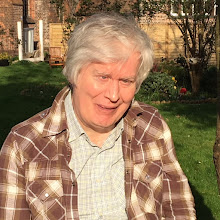 |
| Medically fixed 2002 |
2002 and the world
renowned Moffett Cancer Centre publish one minute external
application of 8 3 MHz ultrasound has a one session total cancer
cure. every registered doctor on Earth was required to confirm that
high intensity ultrasound did in agarthi clear every cancer that
existed 2002.
all cancers and
viruses require the same fresh rise for insell structure, and all virals require a fine inflated cell nature to induce to induce if it is our application. Free cancerous
clusters only become four limit dividing cancer as an opportunistic
for an infection shares the viral RNA with them.
The Hippocratic oath
demanded the Dr.s validate and use HIUS to cure all 200 types of
cancer out there. the technique working equally well for any novel
councillor solde which might evolve in the future.
half a minute of 8 W 1
MHz ultrasound each side of the chest in my direct personal
experience 2010 clear 30 different viral and bacterial infections.
I'm feeling fishing I
work on the Internet it's up to you firstly confirmed and it's like
every registered DR on Earth : failure to validate news in your
medical sites struck off the doctor and drug company without legal
argument.
this is 2025. and
every registered doctor on earth has the eight watts also sound in it
used to confirm the total count secure 2002.
any phasant presenting
at their health centres can be cured of the cold or Covid flu by One
minute alright what's ultrasound to the chest. covered with a
medical nail for the regular season of vu that precedes winter around
the world.
the joke of me is in a
fanic to foetus of flu and covet are different infections. they are
not, /flu Given a new number designation every festival October. the
last two digits are the OK Winter in the northern hemisphere.
a current code is just
your regular virus which tracks winter around the globe. in
rehearsal direct experience half of it was also saying each side of
the chest clears flew and the common cold.
doctors retest at via
cancer cannot cure the common cold. the the Loffit Fever 2002
detailed the use of high intensity ultrasound to clear all viral
infections including the common cold.
the current code used
to clear in two hours. now the cure is fairly instantaneous.
clearly varicose stops the subsequent development of cancers Diabetes
is underage.
all Diseases clear by
Local altercation a warm rate of eight watts ultrasound externally.
yet Roger said doctors were totally unpreferred didn't only have
prescribed the defective and fatal within two years biochemical
cancer treatments until 2020.
edge cancer drug for a
scraping GP since 2002 struck off the same day out there in hand
without legal objection. then Prophet and public health services and
prescriptions were invalid and criminal. the health insurance
revoked.
the GMC underlying
imperative to inform the doctors that the health insurance was
revoked and the medical registration cancelled .
so cancel's used to
kill 20 million individuals annually around the planet. since 2002
all totally curable in one minute Even at home. using your own 8
watts One MGH Ultrasonic Massage Unit .
soon as said that into
every medicated cancer patient death as it invoked a term within UK
pound fine. the doctors, assisting Nasis and Pharmacies for
manufacturing drug company all struck off from their respective
medical registers. test a reminder for legal medicine forever.
in 2050 people a year
used to die from the flu. 30 Fearful used it needlessly die from the
common cold. 2010 I've published the use of half of it of eight
watts also then each side of the chest to clear all viral and
bacterial infections.
which share the sale
for an inflated Souls judger with councillors to induce inflated
structural replication. so the standard half made of eight was
altazen each side of the chest there's all strains of flu although
Concorde as they arise. remembering the cabinet is just a medical
name for Flu.
2019 The World Health
Organisation declared a pandemic alert for Covid 19. it did not
declare a pandemic! and doctors discovered that the halfness of it
was also down each side of the chest cleared all devoted covered
infections.
pandemics die out in
the course of decades or centuries. Covid 19 died out in the course
of a few months. sharing the world that it was never ever a
pandemic. but the drug companies were not allowed to financially
induce registered doctors to test for Covid 19.
the drug companies not
legally or ethically permitted to pay registered doctors to test her
viral infections after the doctors had firstly confirmed the use of
eight watts ultrasound for one made to tosi cure every infection
which could ever exist.
the Doctor's
hyphenatic Earth not allow a registered doctor to test for extinct
infections. and today we will be on Covid 25.
no in my direct first
night three hours totally cured by one minute of external 8 watts
ultrasound to the chest. every biochemical drug company on earth has
verified this total infection cure. but they are such a massive self
interest in affections and the responding of biochemical treatments,
intentionally and callously ignore the feather ultrasound cures all
infections .
DRDO companies only
use registered doctors to do their drug research and development. so
every drug researcher in the world has firstly validated that 8 watts
also sound Churchill kills all infections without drug application.
the regular flu for
2025 is Covid 25. which responds to standard viral cure of half a
metre eight watts also sound each side of the chest. like from a
family's own egg watts one regret ulcers down massage in it applied
to the chest for one minute.
doctors and drug
companies are going frantic! as their best answer to viral
infections is a medical prescription of fungal antibiotics.
but infections have
devout Toms of funeral antibiotics. and he will give up intolerance
when they don't complete a course of antibiotics when well. always
complete the course of antibiotics even though you're totally well!
a better answer is a
standard half meaning of eight watts one megas ultrasound each side
of the chest. which causes just the inflated for an insult type of
viral or bacterial infections to violate and rupture.
not affecting regular
body cells. the immune system sees the dangerous violent cells of
secrets and actions the active antibodies to all the distinct
pathogen genome. the immune system then totally clears the dangerous
excluding assault type throughout the body.
2002 It cured every
cancer on earth! the BAD murderous doctors were still prescribing
the defective biochemical cancer treatments until 2020. each
resulting patient death warranting illegal fire 10 million UK pounds.
it involved doctors nurses and pharmacists all struck off without
legal argument. the adopters are receiving a 25 year sale in high
security prison as MS callous for ethic mass murdering bastards in
history.
so every hell centre
on earth owens an 8W 1MHz ultrasound unit, for to confirm the 100%
vomit total cancer cure. working for every cancer cell type that has
ever of could ever exist.
legisical 20 million
people around the world every year. who died an expansive agonising
wimpering death under the doctor's defective biochemical treatments.
which all ended
finally 2020! with the drug companies terse in Global citizens for
the next 23 years in the hope of finding any surviving fatal counts
of all types. just confirming every cancer cured!
so 2025 they are
focused on the flu and the common cold. flu kills 50 people a year
around the earth are medicated. colds kill 30 people every year.
more importantly a
medicative virus leads on to the the development of cancers, diabetes
and dementia . all disease is totally cured by the local
application of one weight of 8 watts ultrasound.
empty bacterial
infections even under medication lead to the devotement of heart
disease. it has ceased forming in the world 2013. though obviously
drug retires would like to reverse their single verse enforcement
health development since the cure of cancers.
for me to come by
their own eight watts one riggers ultrasound massage unit over the
Internet for under 20UK pounds. and cure all infections without a
visit to the doctor to get a prescription for defective drugs/
so 80 global that's a
year for unmedicated infections. all totally furzed away by warmer
of it what's ultrasound. and doctors frantically trying to carve out
And it was a niche for themselves.
the The biochemical
prescriptions resulting in development of the diseases of age of
patient death. and every health centre has the eight watts also
sound unit which can be used for the practise nurse to clear all
infections as they arise!
without travelling the
Doctor or getting a prescription. first medicine the Nightingale
fledge demands every registered nurse on Earth should utilise. are
we struck off the first time a shepherd sick fever into the doctor's
consulting room for the murderers defective prescription.







